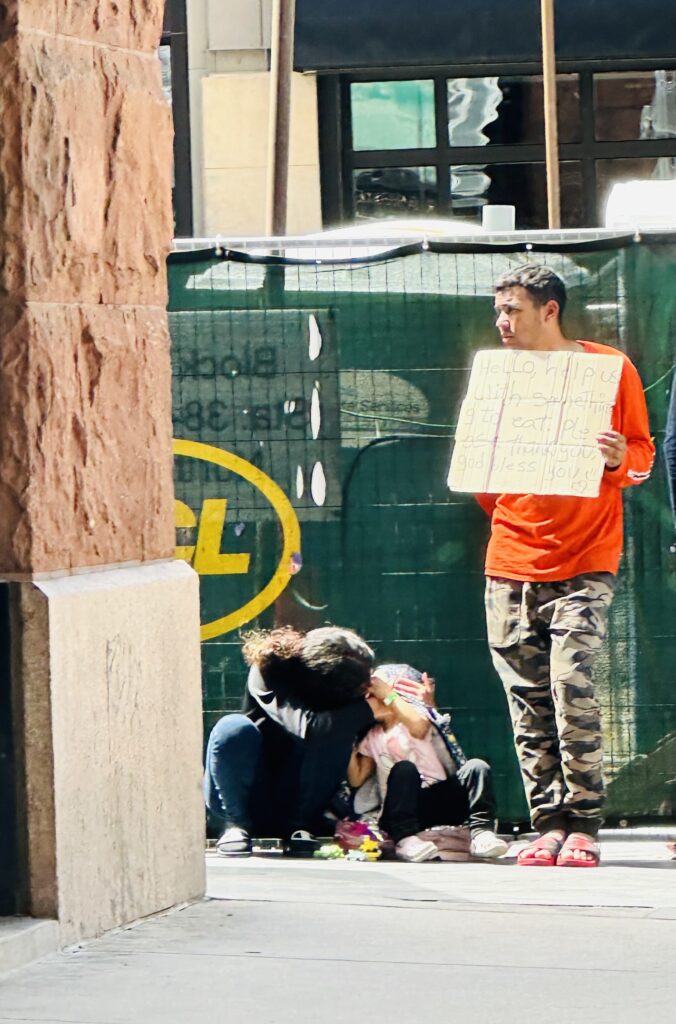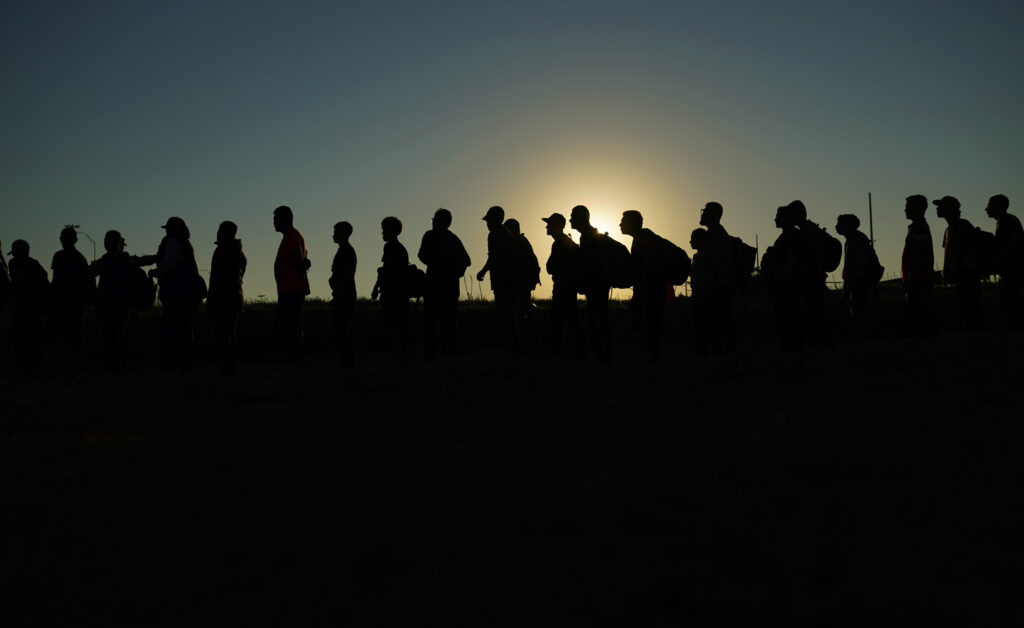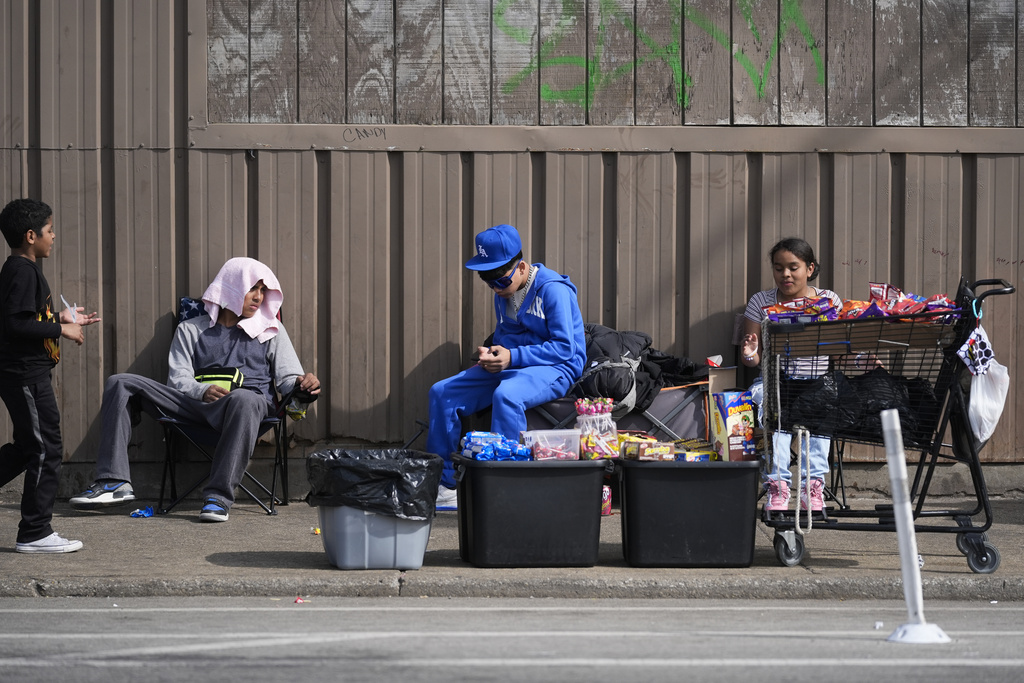
Denver, Colorado, a self-described “sanctuary city,” has cared for more than 41,000 illegal immigrants over the past two years. The new arrivals have drained city resources and led to resentment from locals. The same can be said for other blue cities across the United States. This Washington Examiner series, Cost of the Migrant Crisis, will investigate the strain on cities, schools, and healthcare within Denver in particular.
DENVER, Colorado — Sofia Guzman and her mother left Colombia six years ago in search of a better life. They found it in Denver, Colorado.
Her family had owned a business in South America but was repeatedly harassed by government goons who demanded bribes and threatened to harm Guzman if her family didn’t pay.

“My mother didn’t want me to grow up in that kind of environment,” she told the Washington Examiner. “It was toxic.”
The Guzmans sought asylum and went through the proper channels to become legal immigrants. In school, Guzman flourished. She went from struggling in English language development classes to getting straight A’s. Her goal is to go into real estate eventually, an opportunity she knows she wouldn’t have had in Colombia.
It’s also why she’s conflicted when it comes to the thousands of illegal immigrants who have flooded Denver in the past two years, forced, often without warning, to make the treacherous journey from their homes in search of safe haven.
Mixed feelings from locals
But unlike Guzman, the 41,355 who ended up on Denver’s doorstep over the past two years are in the country illegally. Caring for them has become a full-time job for the self-described “sanctuary city.”
“I have mixed feelings about it,” Guzman said. “I feel like some of them try to take advantage of being an immigrant, and that’s not OK. At the same time, I feel bad because some of them have kids. I was a kid when I came over, and it was really hard. People were speaking to me in English so fast. I couldn’t understand anything.”

Nicholas Torrejon, a 23-year-old medical student from Venezuela, is also struggling to come to terms with his feelings.
“Some of them had to escape hell,” he told the Washington Examiner. “It is horrible, but still, it cannot come at the expense of people who are here legally. It’s a tough thing to say, very tough, especially when I think of my family, but it’s true.”
Denver’s crisis has nearly depleted city resources and forced several departments, including police and fire, to slash their budgets to free up funds to deal with the influx. The arrivals have sparked backlash and prompted nearby cities and counties to rescind welcome offers preemptively.
In April, Douglas and El Paso counties sued Colorado and its Democratic governor over policies that restrict local law enforcement officials from working with federal authorities on illegal immigration. They view the Mile High City as a cautionary tale and don’t want its illegal migrant problem to become theirs.
Arms wide open
Denver, along with other Democratic-run cities, had their arms outstretched when illegal immigrants began arriving en masse at America’s southern border. Mayors made public pledges that no one seeking refuge in the United States should be turned away, only to have Gov. Greg Abbott (R-TX) call their bluff.

In 2022, Abbott, in an effort to highlight his dissatisfaction with the Biden administration’s immigration policy, started busing thousands of migrants to Democratic cities. As of April, he has sent more than 105,000 to New York, Chicago, and Denver. The mayors of those three cities, which had initially been so accommodating, are now singing a very different tune.
The fiscal strain has overwhelmed their cities with no real long-term solution in sight.
Denver has been the hardest hit, with more per capita than any other.
In December alone, when temperatures regularly dipped below the freezing line, 144 buses filled with illegal immigrants were dropped off at different locations in the city, leaving local officials scrambling to find temporary housing, clothing, and food. Local nonprofit groups, religious groups, and philanthropic organizations also stepped in, mobilizing volunteers who did everything from handing out hot meals to organizing donation drives. Some even opened up their homes as a safe space for families they had never met but who had nowhere else to go.
At its peak, 10,000 were arriving daily in Denver, a city of 710,000.
“I don’t think that there is anything on God’s green earth that could surprise us anymore after December,” Jon Ewing, a spokesman with Denver Human Services, told the Washington Examiner.
Since then, the number of arriving has slowed significantly. On Saturday, 19 illegal immigrants made their way to Denver. On Sunday, three. As of April 28, there were 651 illegal immigrants in the city’s hotel shelter and 19 in its short-term shelter. The city has served 41,358 in total.
Mike Johnston plan of action
Earlier this month, Democratic Denver Mayor Mike Johnston announced a major overhaul to how the city would respond to the crisis. The Denver Asylum Seekers Program would offer 1,000 immigrants six months of housing, food assistance, and help with obtaining a work permit.
Not everyone was impressed.
Housekeys Action Network Denver spokeswoman V Reeves called the new program, which also limits the amount of time illegal immigrants can stay at city shelters to between 24 and 72 hours, a “slap in the face.” The previous policy had been between 14 and 42 days.
Johnston said his new plan is the best solution available.
In all, Denver has spent nearly $69 million. It has received a reimbursement award of $3.5 million from the state. The Department of Homeland Security has advanced the city $1.6 million. Denver also has approximately $12.2 million in federal reimbursements pending. On April 12, DHS announced Denver may be eligible for an additional $4.8 million, which the city will pursue.
The rest has come from the pockets of Denver taxpayers. Money for food, shelter, and other services was taken out of the city’s operating budget, which prompted Johnston to float the idea of reducing some city services. His proposal landed with a thud among voters, and he was forced to pivot.
Over the past several months, thousands of migrant children have also enrolled in Denver Public Schools, putting their arrival past the October deadline that calculates per-pupil-funding to state school districts. In Denver, the per-pupil funding shakes out to $11,000 per student per year. DPS said in February that the district had enrolled 1,900 new students after the October count, leaving schools short $20.9 million in state funding for the year. On April 18, Gov. Jared Polis (D-CO) signed a one-time $24 million funding boost to schools hit by skyrocketing costs after the enrollment spikes.

Denver has also had to foot the bill for healthcare.
Denver Health, the city’s designated charitable care provider, reported that illegal immigrants made 20,000 visits to the hospital in 2023, needing $10 million in uncompensated care. Caring for the new arrivals comes at a time when the hospital system was already struggling under the weight of treating the homeless and uninsured. The hospital provided $140 million in care last year, for which it was either not reimbursed or only received a fraction of the cost from government programs.
Denver not the only city struggling
Chicago and New York are also struggling.
Chicago, the site of this year’s Democratic National Convention, has already spent more than $310.3 million in city, state, and federal funds to care for thousands bused to the city and desperate for help. But the speed at which the money was freed up has hit a sore spot with black and underserved Chicagoans who said they’ve been asking the city for assistance for years only to be ignored.
“I definitely don’t want to seem insensitive to them and them wanting a better life,” Charlotte Jackson, who owns a bakery in the city’s South Loop neighborhood, told the Associated Press. “However, if you can all of a sudden come up with all these millions of dollars to address their housing, why didn’t you address the homeless issue here?”
Her husband, Chris Jackson, said the rush to help illegal immigrants instead of fixing existing problems in the area stings.
“For so long, we accepted that this is how things had to be in our communities,” he said. “This migrant crisis has made many people go, ‘Wait a minute, no it doesn’t.'”

In all, nearly 40,000 have arrived in Chicago since busing began, with 8,724 currently housed in 17 city-run shelters and another 69 asylum-seekers awaiting placement, according to the Chicago Tribune. The city had already budgeted $150 million to care for asylum-seekers this year as part of Chicago Mayor Brandon Johnson’s 2024 budget. However, the Democratic mayor recently acknowledged it won’t be enough and has sought an additional $70 million, which was passed in a 30-18 vote after more than an hour of heated debate.
Budget Committee Chairman Jason Ervin, a Democrat, admitted that the crisis has created a division not only in the city but also within the council, calling it a “challenge.” “Do we want to spend this money like this right now? Of course not, but again, we have an obligation, and we have a responsibility to move this ball forward,” he said.
The costs are also rising when it comes to education.
Kimako Patterson, chief of staff at the Illinois State Board of Education, said 162,644 new illegal immigrant students have arrived in the state’s schools from 147 different countries over the past two years. While most have enrolled in Chicago Public Schools, 12,771 are enrolled in other districts.
In January, ISBE submitted a funding request for fiscal 2025 totaling $11 billion, or about a fifth of the state’s entire General Revenue Fund budget, which included $35 million in new funding to support migrant students. Education advocates are now saying the dollar amount was based on old information and is entirely too little. Instead, they are pushing for $188 million just for districts in the Chicago metro area.
In New York, the cost of caring for illegal immigrants has also spiked. Democratic New York City Mayor Eric Adams has come under scrutiny for his handling of the crisis and the city’s spending habits.

Since July 2022, New York City has shelled out $2.4 billion on its migrant crisis. Adams returned to Albany two months ago, seeking more financial help from the state. He estimated in his pitch that if the current influx of migrants continues, it will cost the city $10 billion by the summer of 2025, which he claimed would “destroy” it.
CLICK HERE TO READ MORE FROM THE WASHINGTON EXAMINER
The city had initially planned to spend $12.3 billion on migrants from 2022 to 2025, making up between 2.5% and 4.3% of the city’s spending in fiscal 2023, according to the mayor’s Office of Management and Budget.
Social Services Commissioner Molly Wasow Park said it now costs the city $388 per day to house and care for a single migrant household.
















